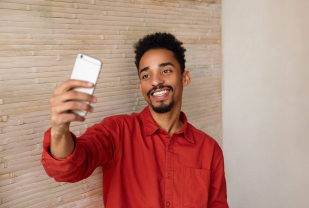Hi everyone!
We hope you’re all having a wonderful day. Your day might just get a whole lot better, as we’re about to announce the winners of another $1,500 Annual Essay Writing Contest Scholarship!
Let’s go over the stats of this year’s competition.
We received 882 submissions, 750 of which were evaluated. Unfortunately, a small percentage of works couldn’t make it to the next stage for various reasons. Some of them weren’t formatted properly, were written on a different topic, or contained plagiarism.
We’re thankful for each and every submission and for showing an interest in our contest!
Submissions accepted to the evaluation stage were awarded points based on the following parameters:
- Grammar, Punctuation, and Spelling – 20 points,
- Use of Language and Style – 30 points,
- Content and Ideas – 20 points,
- Organization – 20 points,
- MLA Referencing – 10 points.
The average score across all of 750 submissions was 62 points. Not a bad result!
And now, to the winners.
This year’s contest is particularly unique as instead of first and second places, we have two number ones! Both works received 91 points, and each will receive a prize of $750!
Our winners are:

Maya Steele with the essay, “The Happy Medium: Safely Maintaining Social Interaction”
The Happy Medium: Safely Maintaining Social Interaction
While everyone has different preferences regarding how much time, energy they devote to others, communicating and interacting with others is a critical part of maintaining good mental health. Even from a young age, humans need socializing to further boost cognitive development and verbal communication (“Why is Socialization Important for Brain Health?”). Socializing benefits both the individual and society; it helps us gain perspective and understand the world better. As The Conversation puts it: “humans are fundamentally social,” and we know that “happy human beings are those who maintain quality social relationships throughout their lives” (“Four Ways to Socialize During the COVID-19 Pandemic”). Interacting with others is both a necessary and inevitable part of life as well as a desired one.
When the Coronavirus–COVID-19–wrecked our normal world and spiked people’s fear, we could no longer catch up with coworkers, hug family members, and celebrate with friends due to the possibility of catching or spreading the deadly virus. People had to adjust to many new ways of living—one of these being that we had to make more of an effort to stay connected with each other. These unfortunate circumstances did invite an opportunity to get creative with how people maintained relationships and satisfied the need to interact with others.
Just because we could no longer interact with others in person did not stop communication between family and friends. The usage of videotelephony communication allowed us to continue to communicate. Many people tried to adjust to the “new normal”—as many began to call the COVID-19 quarantine—by connecting with loved ones through the screen. Thanks to technological advances, we traded catching up in person to communicating through apps such as Zoom, which allowed us to see each other and chat safely. My mother could no longer go to dinner with her friends, so they would instead connect using Zoom once a month to catch up.
A common Google search became “Ways to connect with others during quarantine.” The search results prove the desperation to find creative ways to communicate with people without interacting in person as hundreds of articles pop up with similar headlines. Ideas range from having a Netflix Party—where friends can watch Netflix together—to new websites that allow friends to compete in popular card games. Websites that permitted virtual game nights became a way that I interacted with my friends. We would “get together” virtually and play card games. Many had to make a point to connect with others because interacting no longer happened organically.
Socializing has always been crucial for mental health. However, it only became more important during the early stages of quarantine when people were still grappling with the shock of the pandemic as well as the crowded hospitals. It is too easy for people to feel the weight of all the tragedies, be consumed by them, and ultimately drift away from others. Many had to devote more effort to ensuring they interacted with others, whether it was to play fun games or to share in their losses and grief.
Jennifer Wegmann, Binghamton University, explains on WBNG that “people are finding it…more difficult to cope with their stress because they’re not necessarily feeling like they have the social interaction” and interaction aids in stress (“Staying connected: Why social interaction is important during this pandemic”). Wegmann continues her discussion by explaining that “we can use [this] crisis [to] live in the moment…particularly as it relates to relationships and connecting to people” (“Staying connected: Why social interaction is important during this pandemic”). Wegmann emphasizes the importance of social interaction during hard times. She explains that sharing in one’s sadness is vital to one’s mental health. Wegmann believes there is a greater lesson to learn regarding active presence in hard times and staying connected with others.
Most never thought they would have to learn to socialize safely during a pandemic, but the reality is we all had to adapt. People could not completely isolate themselves from others because doing so means jeopardizing their mental health. People learned how to cope with the sadness and isolation the pandemic caused by getting creative with ways to safely communicate and interact, thanks to the advanced technology we, fortunately, have in today’s society.
Works Cited
“Four Ways to Fill the Need to Socialize during the COVID-19 Pandemic.” The Conversation, theconversation.com/4-ways-to-fill-the-need-to-socialize-during-the-covid-19-pandemic-159773. Accessed 30 May 2021.
“Ten Ways to Stay Connected during COVID-19.” International Council on Active Aging, www.icaa.cc/blog/2020-04/10-ways-to-stay-connected-during-COVID-19.htm. Accessed 30 May 2021.
Wegmann, Jennifer. “Staying Connected: Why Social Interaction is Important During this Pandemic” WBNG.com Videoconference interview. Conducted by Annie Flaherty, 21 Apr. 2020.
“Why Is Socialization Important for Brain Health?” Asbury, www.asbury.org/blog/why-is-socialization-important-for-brain-health/. Accessed 30 May 2021.

Abigail Sider, with the essay, “The New Normal: Socializing Safely During the Pandemic.”
The New Normal: Socializing Safely During the Pandemic
“Humans are social beings, and we are happier, and better, when connected to others,” said Canadian-American psychologist Paul Bloom (qtd. in “Paul Bloom Quotes”). This statement has rung true this past year more than ever. Although the COVID-19 pandemic has forced society into lockdown, humans’ innate need to socialize has not simply disappeared. In fact, “preliminary surveys suggest that within the first month of COVID-19, loneliness increased by 20 to 30 percent, and emotional distress tripled” (Holt-Lunstad). As many people sacrifice social connections to stay protected from the virus, isolation has become a major problem.
With the evident need for safe social connections, it is no wonder that the video conferencing app Zoom was the 5th most downloaded app in the world and the 2nd most downloaded in the USA in 2020 (Koetsier). Maintaining connections amongst stay-at-home orders and lockdowns has increased the world’s reliance on technological devices, a reliance that was already growing before the onset of the pandemic. With every social interaction moving online, from game nights to school classes to business meetings, many people are experiencing ‘Zoom fatigue.’ They feel exhausted while accomplishing nothing because the “brain becomes overwhelmed by unfamiliar excess stimuli while being hyper-focused on searching for non-verbal cues that it can’t find” (Sklar). Furthermore, events such as virtual funerals and weddings, while better than nothing, “feel drastically inadequate” (Holt-Lunstad). As many people tire of video meetings, they are looking for ways to interact off of their screens.
The onset of warm weather in the Northern Hemisphere has provided more opportunities to interact away from technology. With the risk of transmission 18.7 times lower outside than indoors (Stulpin), outdoor gatherings are becoming a top choice for many who want a safe yet fulfilling way to socialize. In Ontario, Canada, a decision to close outdoor recreational facilities caused many people to be upset and confused. Dr. Isaac Bogoch, who sits on the province’s COVID-19 vaccine task force, commented that “Outdoor activities are vital for mental & physical health, especially with stay-at-home orders” (@BogochIsaac). For me, socially distanced, outdoor gatherings with a few close friends or family have been a great way to relieve stress and feelings of isolation. Without this option, I would not be able to stay connected to my grandparents, who do not have a reliable internet connection for video calls.
However, as government restrictions and climate conditions hold no guarantee that outdoor gatherings will be a viable option to socialize, some are starting to experiment with creative ways to maintain connections. For instance, in Seabrook, Texas, a group of middle-schoolers used Zoom to give PowerPoint presentations to each other on topics they are passionate about. Georgia, one of the participants, said, “this is a way to come together, in a different way—teaching instead of just talking” (qtd. in Beck). My friends and I use similar tactics to liven up our weekly video calls. In one instance, we used Kahoot, a game-based learning platform, to create trivia challenges about ourselves and get to know each other more in the process. This ‘outside-of-the-box’ thinking is becoming necessary to socialize amidst stay-at-home orders.
Despite the various ways to socialize safely, they all fall short of the real thing. Before the pandemic, get-togethers were mask-free, and no one had even heard of social distancing. While the current situation is certainly less than ideal, I know that it has caused me to cherish the small moments more than I ever did before. Taylor Swift said it best: “People say you don’t know what you’ve got till it’s gone, but the truth is you just never thought you’d ever lose it” (qtd. in @QuoteTaySwift). No one saw the pandemic coming, and suddenly simple things like running out to the grocery store or eating in the cafeteria with friends have become much more complicated. It is in these times where the small moments—the doorstep birthday visits, phone calls from a friend, and care packages—feel all the more precious. Whether you choose to video call, go on a bike ride with someone, or write a letter, the most important thing is to find ways to socialize and stay connected to others during this COVID-19 pandemic.
Works Cited
Beck, Julie. “If You and Your Friends Are Bored, PowerPoint Parties May Be the Answer.” The Atlantic, 27 Mar. 2020, www.theatlantic.com/family/archive/2020/03/friendship-files-powerpoint-party-teens-coronavirus-quarantine/608827/.
@BogochIsaac. “Ontario’s closure of outdoor recreational activities (including pickleball!) to control #COVID19 does not make sense. Outdoor activities are vital for mental & physical health, especially with stay-at-home orders. Science is clear: Outdoor COVID transmission is extremely rare.” Twitter, 17 Apr. 2021, 9:52 p.m., twitter.com/BogochIsaac/status/1383418132220444674
Holt-Lunstad, Julianne. “The Double Pandemic Of Social Isolation And COVID-19: Cross-Sector Policy Must Address Both.” Health Affairs, Project HOPE, 22 June 2020, www.healthaffairs.org/do/10.1377/hblog20200609.53823/full/.
Koetsier, John. “Here Are The 10 Most Downloaded Apps Of 2020.” Forbes, Forbes Magazine, 7 Jan. 2021, www.forbes.com/sites/johnkoetsier/2021/01/07/here-are-the-10-most-downloaded-apps-of-2020.
“Paul Bloom Quotes.” BrainyQuote, BrainyMedia Inc, 2021, www.brainyquote.com/quotes/paul_bloom_644648
Sklar, Julia. “’Zoom Fatigue’ Is Taxing the Brain. Here’s Why That Happens.” National Geographic, 24 Apr. 2020, www.nationalgeographic.com/science/article/coronavirus-zoom-fatigue-is-taxing-the-brain-here-is-why-that-happens.
Stulpin, Caitlyn. “Transmission of Respiratory Illnesses Outdoors ‘Definitely Happens’ but Less than Indoors.” Healio, 8 Dec. 2020, www.healio.com/news/infectious-disease/20201207/transmission-of-respiratory-illnesses-outdoors-definitely-happens-but-less-than-indoors.
@QuoteTaySwift. “‘People say you don’t know what you’ve got till it’s gone, but the truth is you just never thought you’d ever lose it.’ – Taylor Swift.” Twitter, 23 Nov. 2013, 10:35 p.m., twitter.com/QuoteTaySwift/status/404453282342793216
Well done!
As usual, don’t worry if you weren’t a winner this time, there will be more contests in the future! Stay up to date with new announcements on our writing and video contest pages!

![$1,500 Annual Essay Writing Contest Scholarship Winners Announcement [2021]](https://ivypanda.com/blog/wp-content/uploads/2020/07/close-up-gold-trophy-award-3d-rendering-704x372.jpg)





Thank you for this wonderful opportunity IvyPanda! I thoroughly enjoyed researching and writing my essay. The instructions and process were clear and easy to follow. I was honoured to receive a prize and I hope to participate again in the future!
Interestingly, how could the post, which was liked by 424 followers, evaluate 750 submissions? Could participants take place only if they liked the post and shared to the story? We don’t believe in your justice!!!